The Nguyen Dynasty throne being invaded by a person with signs of a psychopath is a wake-up call for the preservation of national treasures. In the world, many masterpieces are also being destroyed by bad guys, making restoration and repair very difficult.
Mona Lisa masterpiece has been vandalized many times
Over the past 110 years, Leonardo da Vinci's Mona Lisa has been stolen, had teacups thrown at it, had bags packed away... But the most memorable act of vandalism to the work involved a Japanese woman named Tomoko Yonezu with a can of spray paint.
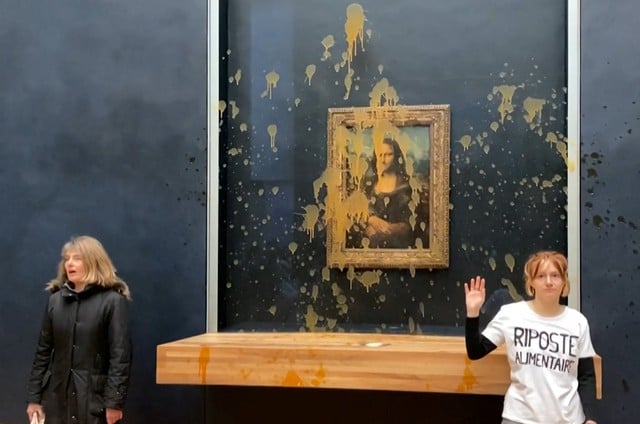
2 environmental activists throw soup at Mona Lisa masterpiece on display at Louvre museum
PHOTO: AFP
In 1974, the work from the Louvre in Paris was exhibited at the National Museum in Tokyo, which implemented crowd control measures when disability activists said the exhibition was discriminatory. Angry at the discrimination against disabled people, Ms. Yonezu spray-painted the Mona Lisa . Her trial became a famous event in Japan. She eventually had to pay 300,000 yen (about 55 million VND) and the National Museum was forced to set aside a day for disabled people to see the painting.
Forty-eight years after it was spray-painted, the Mona Lisa has been vandalized again at the Louvre Museum in Paris. Amid ongoing climate change protests, a person in a wheelchair approached the painting and smashed the protective glass surrounding Leonardo's work. "All artists, think about the Earth. That's why I'm doing this. Think about the planet," the vandal, later identified as a 36-year-old man, said. The vandal was taken away by police and the Louvre Museum filed a lawsuit against him.
On January 28, 2024, two environmental activists threw soup at the Mona Lisa on display at the Louvre Museum, demanding the right to "healthy and sustainable food".
However, the Mona Lisa masterpiece appears to have been left undamaged by a series of vandalism and is still admired by thousands of people every day.
Picasso's Guernica spray-painted
In 1974, art dealer Tony Shafrazi became the talk of the art world for a very different reason. That year, he entered the Museum of Modern Art (MoMA) in New York, where Picasso's Guernica was on long-term loan, and spray-painted the words "Cancel All Lies" on the masterpiece.
In fact, the phrase refers to a protest over the release of Lieutenant William Caley (convicted for his role in the My Lai massacre during the Vietnam War). Shafrazi participated in anti-war activities led by the Art Workers Alliance. Shafrazi was charged with vandalism. "The painting was unharmed because of the thick layer of varnish that acted as an invisible shield," William Rubin, then director of MoMA, told the New York Times .
Rembrandt's Night Watch is slashed
In 1975, Rembrandt's largest painting, The Night Watch, painted in 1642, was slashed with a bread knife by a man who claimed to have been sent by "God" to the Rijksmuseum in Amsterdam, ordering him to cut the painting.
Although guards initially tried to restrain him, the man managed to slash a nearly 12-inch gash into the painting. “We had to conclude that the painting was badly damaged,” PJ Van Thiel, the museum’s executive director at the time, told the New York Times . Since the work was in good condition before the vandalism, restorers at the museum managed to return it to its original state after four years of work.
However, in 1990, a man continued to vandalize the work, this time with an unknown chemical.
David Hammons' artwork smashed with a hammer
David Hammons was the victim of vandalism in 1989 when his public art piece How Ya Like Me Now? was vandalized. Hammons’ work has always been controversial because it depicts a white version of black politician Jesse Jackson, measuring 14 feet wide and 16 feet tall. When the piece was displayed outside in Washington, DC, vandals used sledgehammers to hit the piece. Some have argued that this shows a lack of understanding of the true nature of the piece, as Hammons was testing the racial perceptions of politicians. After it was repaired, Hammons added a new detail to the piece: the hammers that were used to damage it.
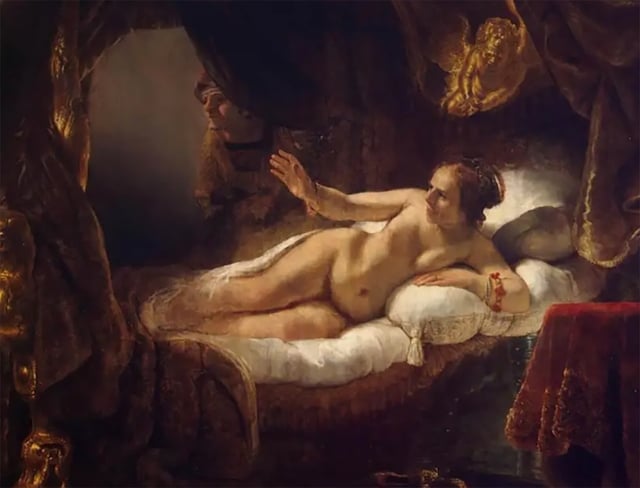
Rembrandt's painting Danaë (1636)
PHOTO: WC
Rembrandt's Danaë is shot with a foul-smelling liquid
In 1985, a man came to the Hermitage Museum in St. Petersburg, Russia, and damaged Rembrandt’s Danaë (1636). The work was one of the crown jewels of the museum’s collection. First, he used a knife to cut the work to pieces. Then, before he was done, he threw a putrid liquid at the painting that some at the time believed was sulfuric acid. Whatever it was, it ate away at Rembrandt’s paint, leaving some to wonder if the painting would ever be the same again. Miraculously, after a painstaking 12-year repair process, the painting was fully restored and put back on display.
Canadian art student vomits on 2 paintings
In 1996, Canadian art student Jubal Brown went to the Museum of Modern Art in New York and suddenly vomited green liquid on an abstract work by Piet Mondrian. A few months earlier, he had done something similar: he vomited red liquid on a Raoul Dufy painting at the Art Gallery of Ontario in Canada. Fortunately, neither painting was damaged. Brown always seemed proud of his actions, claiming they were intended to subvert "bourgeois" culture. He planned a similar act, with a third involving vomiting yellow liquid on an unnamed work, but that final act never came to fruition.
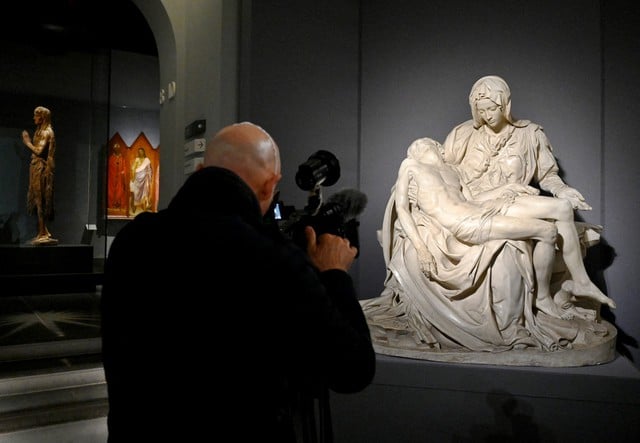
Michelangelo's Pietà
PHOTO: AFP
Michelangelo's Pietà was hit with 12 hammer blows
In 1972, Laszlo Toth, an unemployed geologist, struck the Pietà with a dozen hammer blows, breaking the nose of the statue, leaving a dent in its head. The Vatican Museums then embarked on a painstaking 10-month restoration process. Artisans reassembled the three nose pieces and the remaining 100 pieces of the statue. Experts concluded that if Toth had struck the work from a different angle, he would have broken the head. The work was eventually restored to its original condition and displayed behind bulletproof glass. Toth was deemed a social danger by a Rome court and sent to a psychiatric hospital, where he was released after two years and deported from Italy to Australia.
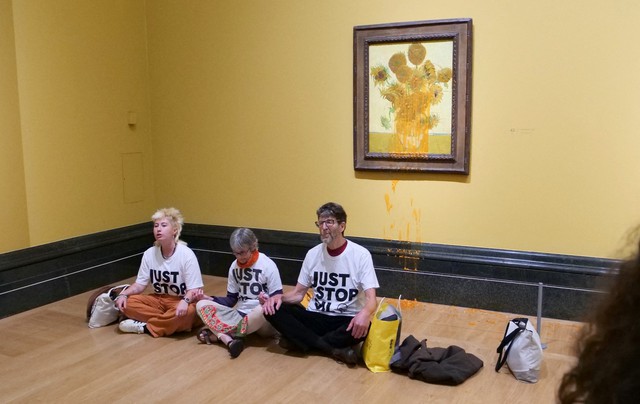
Protesters threw tomato soup at Vincent van Gogh's Sunflowers (1888)
PHOTO: AFP
Vincent van Gogh's painting was splashed with tomato soup
In 2022, climate activists began a series of protests targeting iconic works of art in Germany, Italy, and the United Kingdom. All were aimed at pushing governments to act more quickly to avert the threat of ecological disaster. Protesters from the Just Stop Oil organization took to the National Gallery in London to throw tomato soup at Vincent van Gogh’s Sunflowers (1888). The painting was protected by glass, so it was not damaged.
Source: https://thanhnien.vn/nhung-kiet-tac-the-gioi-bi-ke-ngong-cuong-xam-hai-185250527120845963.htm




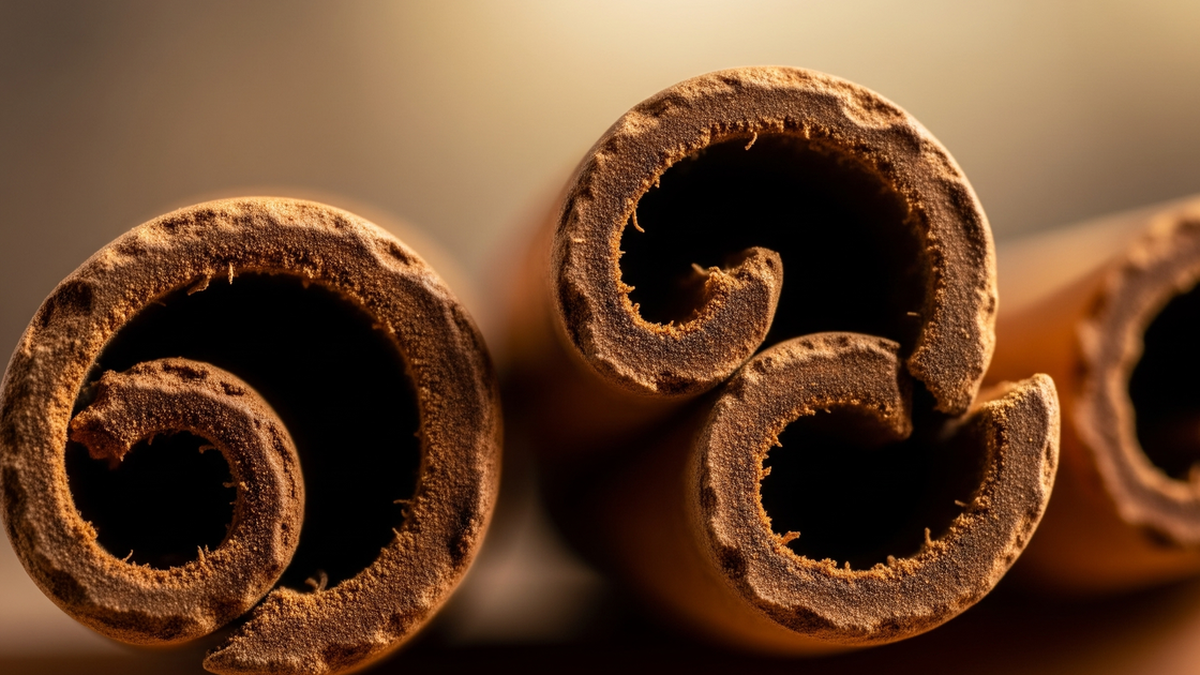















































![[Maritime News] More than 80% of global container shipping capacity is in the hands of MSC and major shipping alliances](https://vphoto.vietnam.vn/thumb/402x226/vietnam/resource/IMAGE/2025/7/16/6b4d586c984b4cbf8c5680352b9eaeb0)













































Comment (0)